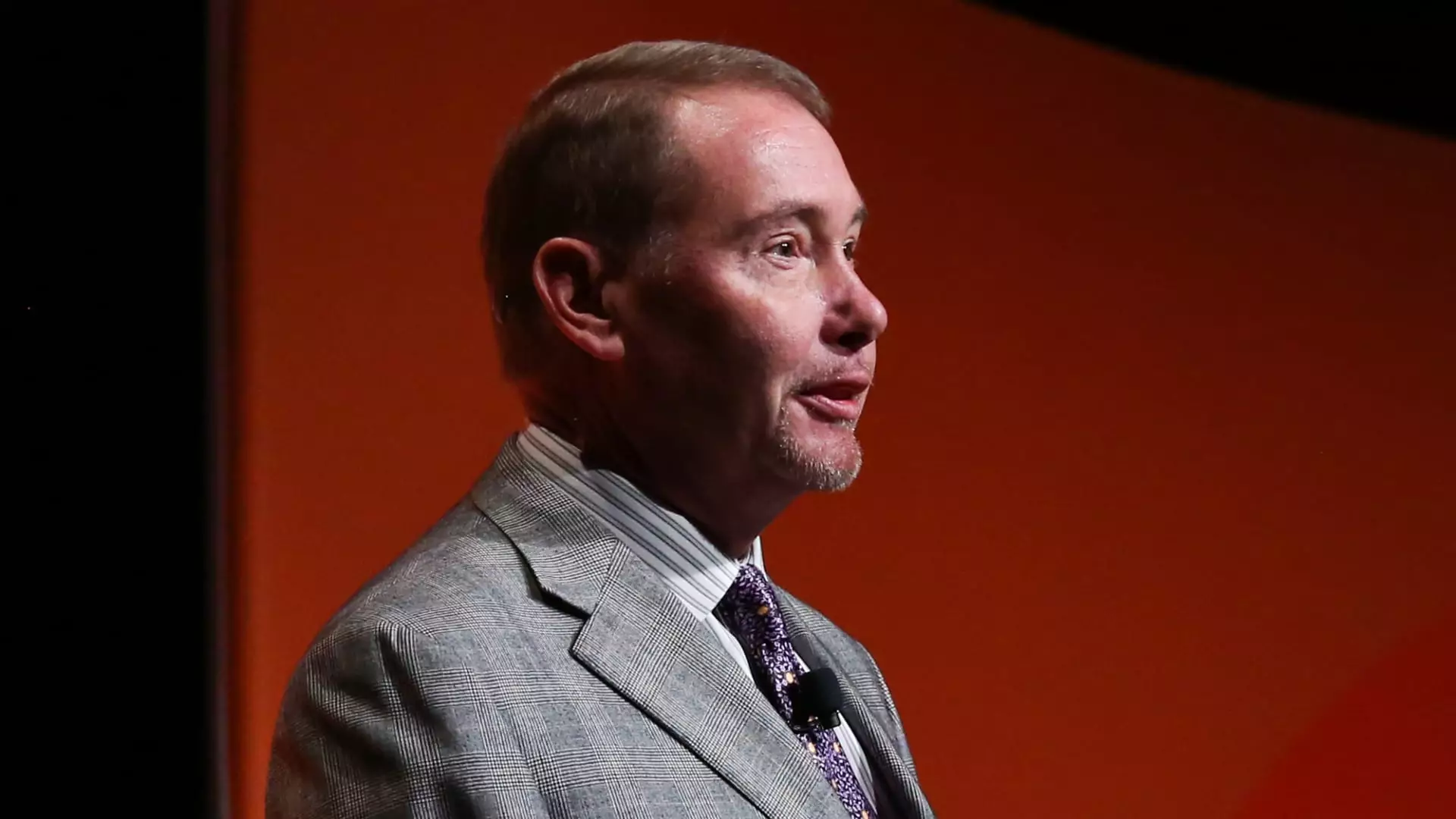Jeffrey Gundlach, the CEO of DoubleLine Capital and a prominent figure in fixed-income investing, recently expressed his critical perspective on the Federal Reserve’s current policy approach. Speaking during an investor webcast, Gundlach employed a rather striking metaphor, comparing the Fed to “Mr. Magoo,” an oblivious cartoon character often found in comically unfortunate situations. This comparison underscores his concern that the Federal Reserve is not systematically addressing the broader economic landscape but is instead preoccupied with short-term data fluctuations.
Gundlach’s critique suggests that the central bank’s reactive stance may hinder its effectiveness. In recent months, inflation has experienced a resurgence after a period of decline, compelling the Fed to engage in a pattern of zig-zagging responses. He argues that this response is indicative of a broader issue within the Fed: an inability to strategize beyond immediate concerns and a fixation on transient data points. This raises questions about the Fed’s overall direction and its commitment to long-term economic stability.
As Gundlach made his comments, the market had recently received a new consumer price index (CPI) report, which indicated a month-over-month increase of 0.4%. While this figure positioned annual inflation at 2.9%, it also highlighted that the core CPI—exempting food and energy—was slightly better than expected. Despite these numbers being more favorable than prior forecasts, Gundlach warns that they reflect continued challenges in achieving the Fed’s target inflation rate of 2%.
This persistent inflation trend emphasizes the delicate balancing act the Fed must perform. Gundlach points out that the central bank’s changes, including the reductions in benchmark rates, signify both urgency and a need for recovery. However, the shifting landscape demonstrates a lack of clarity in navigating future monetary policy directions. If the economy continues to signal inflationary pressures, the Fed might still have considerable work ahead before stabilizing prices.
Market expectations have shown significant variability in response to the Fed’s maneuvers, transitioning from aggressive speculation about rate cuts to a more conservative outlook that anticipates only a handful in upcoming years. Gundlach noted that while the Fed has indicated intentions to cut rates by a total of one percentage point since September, its own forecast revised down from four expected cuts to just two for the year 2025.
The Fed’s alignment with market sentiment raises questions about its effectiveness. As Gundlach aptly puts it, the current environment lacks fresh signals for significant policy changes, suggesting that the Fed may be caught in a web of its own making. The expectation of a standstill during their next meeting in late January—and only tentative cuts thereafter—reinforces the perception that the Fed is treading cautiously through a fog of uncertainty.
In light of Gundlach’s observations, it becomes increasingly evident that the Federal Reserve must refocus its strategies to maintain a sustainable long-term vision. The potential for economic disruption necessitates a balance between responsiveness and foresight. As inflation trends continue to evolve, the Fed must navigate these complexities with care, adopting a more holistic approach rather than one dominated by short-term reactions. In doing so, they can hope to regain control of economic stability and avoid the pitfalls of a hasty or uninformed policy-making process.

